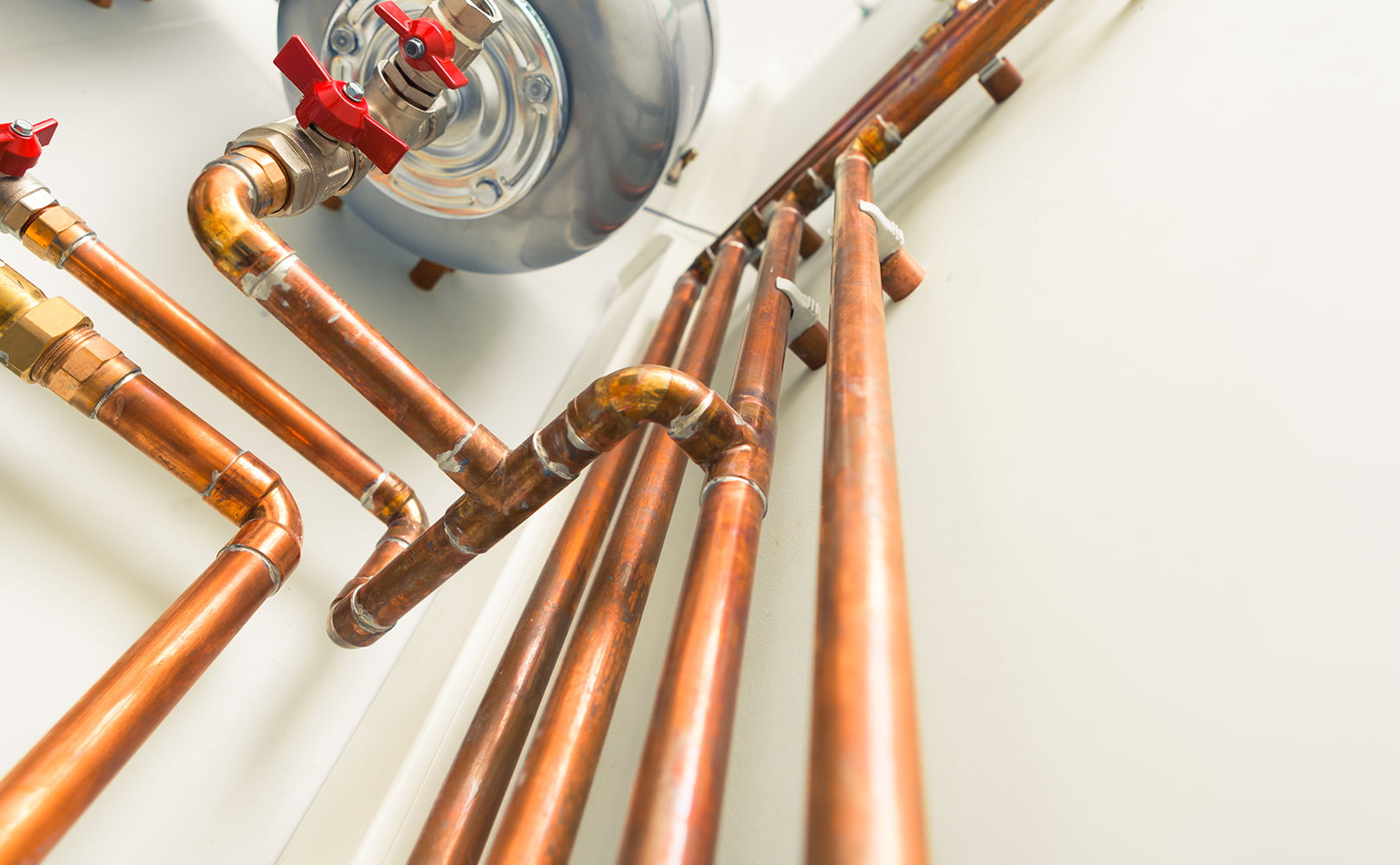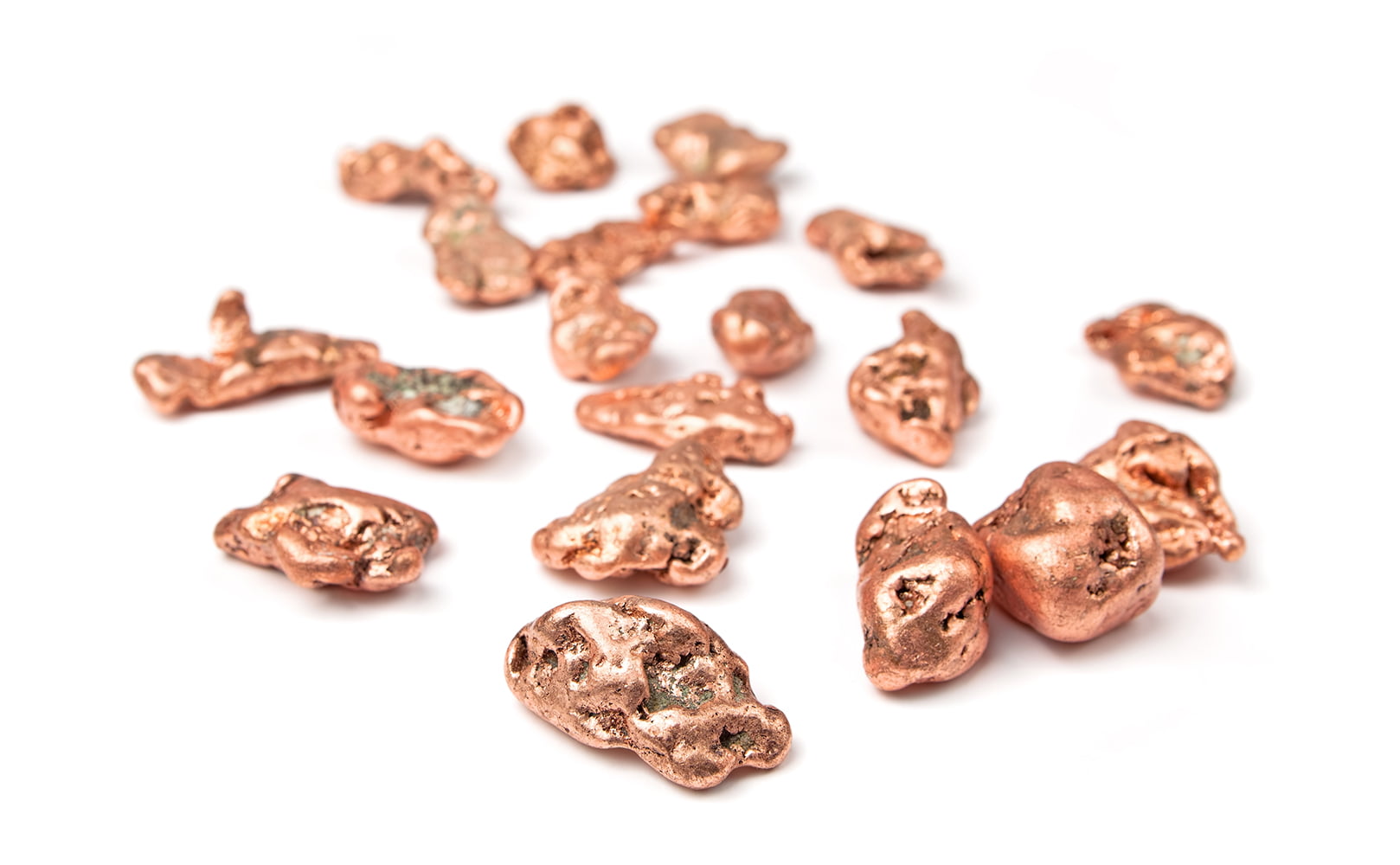Does Reverse Osmosis Water Damage Copper Pipes? #Corrosion
Written by: Alexandra Uta // Last Updated: Jan 8, 2023
This page may contain affiliate links. If you buy a product or service through such a link we earn a commission at no extra cost to you. Learn more.
Reverse osmosis is one of the most effective ways to remove contaminants from water. But some people worry that RO water may be damaging their copper pipes.
So here’s the big question: Should you be worried about your copper pipes if you use reverse osmosis at home? Does reverse osmosis water damage copper pipes?
You’ll find out in this article. We’ll also give you some tips to stop copper corrosion in your home if you have a reverse osmosis system installed.
Key Takeaways
- If reverse osmosis water is acidic, which it often is, it can damage copper pipes.
- This is especially a problem with whole house reverse osmosis water purification and copper pipes, if you are not using post-treatment to balance water pH and alkalinity.
Does Reverse Osmosis Water Damage Copper Pipes?
So, does reverse osmosis water damage copper pipes? Yes, generally speaking, reverse osmosis water can damage copper pipes.
That’s because RO-treated water is often low in pH which causes copper pipes to corrode.
This is especially a problem with whole house reverse osmosis systems and copper plumbing. The RO-purified water still has to travel through your home’s entire plumbing system after the purification process, so that’s plenty of time for corrosion to happen – think stagnant water.
Point-of-use reverse osmosis systems usually do not damage copper pipes since the filtered water does not have to flow through said pipes.
Why RO Water Has Corrosion Effects on Copper Pipes
Reverse osmosis removes all impurities from water, including minerals that help to balance the water’s pH and alkalinity. That’s why RO water is usually acidic (low pH) and aggressive.
When it flows through copper pipes, the water leaches some of the copper on the lines, causing them to corrode.
Why is only whole house RO water purification affected for the most part? Usually, in point-of-use systems, the water does not touch any copper piping; it only touches the RO filter and its plastic tubing and the faucet it flows from. These taps can be made of brass, but most are plastic or stainless steel, or they have a copper-free tubing or coating inside.
What to Do If You Have Copper Pipes and a Whole House RO System
If you’ve already installed a whole house RO system and your plumbing is made of copper, you’ll experience the damaging effects of RO water on copper if you’re not taking precautions.
You could uninstall your RO system, but here’s a much better way to handle the problem:
Install a post-treatment system that adds safe minerals to your water and balances its pH and alkalinity after filtration. That way, your water will be safe from contaminants without damaging your pipes. What system to install? Look into calcite filters. Calcite filters use a bed of calcium carbonate media to correct water pH. Simple!
The Best Pipe Material for RO Water
In an ideal world, if you use a whole house RO system, it’s best to avoid metal pipes like copper, steel, iron, and, of course, lead. Like copper, these metal pipes corrode with acidic RO-treated water. Plastic is the safest and best pipe material you can use here.
PEX, PVC, and Similar
- PEX, or cross-linked polyethylene, is a plastic pipe made from high-density polyethylene.
- PVC is the most common type of plastic pipe made from polyvinyl chloride.
- There’s also CPVC (chlorinated polyvinyl chloride), which is more durable under intense temperatures and pressures than PVC pipes.
PEX, PVC, CPVC, and other similar pipe materials are excellent alternatives to copper pipes. They are easy to install, highly efficient, and, most importantly, bear no risk of corrosion from RO water.
Reverse Osmosis Faucets
There usually is no risk of corrosion with reverse osmosis faucets. These taps are specifically designed to be used with RO systems and slightly acidic water.
What Else Can Be Done to Stop Copper Corrosion in Homes?
What else can be done to stop copper corrosion in your home?
- Again, install an acid water neutralizer. A neutralizer will increase your water’s pH to about 8.0, making the water less acidic and aggressive on metal pipes. Types of water neutralizers that you can install are calcite water neutralizers, as mentioned before, and soda ash feeders.
- Install a phosphate feeder before any copper piping. A phosphate feeder releases food-grade phosphate. The chemical creates a coating barrier to prevent corrosion when water flows through copper pipes.
- If you use a water heater, replace the anode rods at least once in five years. The rod gets rusty and deposits iron in your plumbing when you don’t replace it. Iron deposits in water encourage further copper corrosion.
- Hire a professional to modify your copper plumbing. They may install bigger pipes to reduce the water flow rate. A high flow rate causes more copper to dissolve from the pipes’ interior.
- A professional can also ensure that you use accurate fluxes in the plumbing system design. Excess flux residue causes pitting and corrosion, especially in cold water pipes.
What Is Copper?
Copper is a malleable, brownish-red metal commonly used in producing pipes and plumbing systems. It majorly creeps into the water when it leaches from copper pipes.
What Are the Dangers of Too Much Copper in Water?
If your water contains too much copper, it can cause stomach aches, diarrhea, vomiting, and kidney dysfunction. In addition, a copper overdose may cause liver damage and hemolytic anemia in people with underlying health conditions.
Apart from health effects, having copper in your water damages your plumbing and water appliances. Copper stains sinks, tubs, and even your washing machine and the laundry inside. It also further encourages pipe corrosion.
Safe Levels for Copper in Drinking Water
According to the Environmental Protection Agency (EPA), the maximum safe level of copper in drinking water is 1.3 ppm.
How to Test for Copper in Water
You can test your water for copper by taking your water sample to a state-certified laboratory. The test will show whether your water contains copper and specify the exact levels.
Another option is to use a home copper test kit (they’re simple kits that can detect the presence of copper in water).
If you get your water from a municipal supply, you can ask your supplier for the local water test results. They’ll have a recent one, and they are required by law to give you one if you request. The result will reveal whether the water in your area contains copper.
If you have any questions about reverse osmosis and copper pipes please don’t hesitate to leave a comment below!
Information provided on BOS is for educational purposes only. The products and services we review may not be right for your individual circumstances.
We adhere to strict editorial guidelines. Rest assured, the opinions expressed have not been provided, reviewed, or otherwise endorsed by our partners – they are unbiased, independent, and the author’s alone. We fact-check all content for accuracy. It is accurate as of the date posted and to the best of our knowledge.



